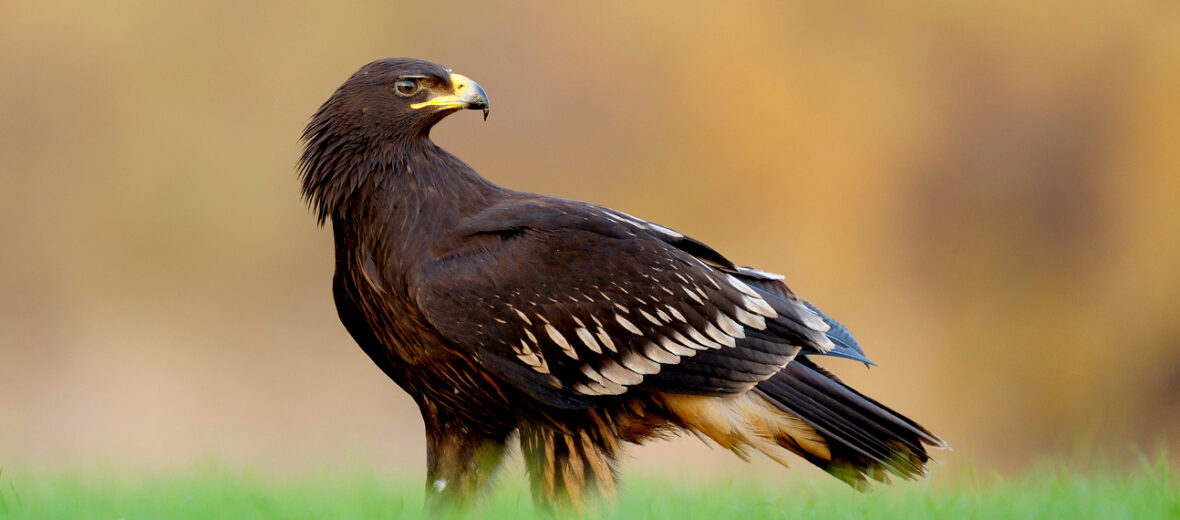
The greater spotted eagle, aka spotted eagle, hails from Europe, Asia, and into Africa. They prefer riparian zones near rivers, bogs, ponds, lakes, a few seacoasts, and other water ways with woodland or forest surroundings. Due to habitat destruction at the hands of residential and commercial development, mining, agriculture, logging, and dams; the dangers of utility lines; hunting and trapping; human intrusion via recreational activities; and invasive species, & with them the potential for disease and predation, these birds of prey are listed as Vulnerable by the IUCN. Their numbers are also decreasing.
First the Stats…
Scientific name: Clanga clanga
Weight: Up to 7.17 lbs.
Length: Up to 29 inches
Wingspan: Up to 6.1 feet
Lifespan: Up to 25 years
Now on to the Facts!
1.) The greater spotted eagle global’s population numbers only an estimated 10,000 +/-.
2.) These predators prey on rats, mice, voles, frogs, reptiles, water birds, insects, and carrion (dead animals).
3.) These eagles are members of the Aquilinae (booted) eagle subfamily. This is due to their legs being covered with feathers.
4.) Like other eagles, sexual dimorphism (1 gender is noticeably different than the other) is strong with these critters, in that the females are markedly larger than the males.
5.) The call most often heard is during intra or inner species fights and makes a soft, one-syllable, yet penetrating & high-pitched, urgent whistle which sounds like a kyack, kluh, tyuck or dyip.
But wait, there’s more on the greater spotted eagle!
6.) These birds migrate to their wintering homes from October – November and back to their breeding homes from February – April.
7.) These eagles build their large nests out of various sticks. They typically measure about 43 inches across and 39 inches deep. Nests are lined with green leaves, grass, and pine needles.
Did you know…?
Being slower flying birds, these eagles can reach speeds of up to 28.5 mph.
8.) Females lay up to 3 eggs that hatch in up to 44 days. But rarely more than 1 eaglet reaches adulthood.
9.) The female typically incubates and broods her young, while the male supplies the food.
10.) As in other birds of prey, typically the oldest sibling is much larger than its younger siblings and usually attacks and kills the younger eaglets.
But wait, there’s still more on the greater spotted eagle!
11.) The hunting success rate is around 34%, on average.
12.) Like owls, smaller prey is swallowed whole and the uneaten matter regurgitated as a pellet. Larger prey items are torn apart and chunks of flesh is eaten whole.
13.) These birds patrol an area of about 5.8 to 11.6 square miles. But territories overlap.
14.) Hybridization has been known to occur extensively between the lesser and the greater spotted eagles.
Now a Short Greater Spotted Eagle Video!
Be sure to share & comment below! Also, check out the Critter Science YouTube channel. Videos added frequently!
Want to suggest a critter for me to write about? Let me know here.



